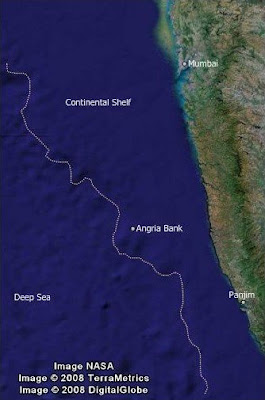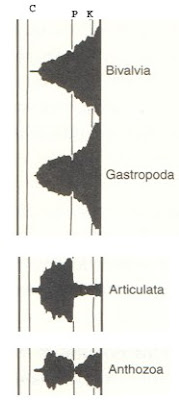It's true, and I get a lot of ribbing from my friends about it. All those years studying and working in the U.S in geology and never been to the Grand Canyon?!! Conversations with people I meet on occasions also tend to be awkward:
Person: So, you're a geologist working in the U.S.
Me: Yes
Person: Very interesting topic. I have been to the Grand Canyon twice
Me: I've never been there
Person: No, but.....but.... you are a geologist. I mean what did you do?
Me: I spent all my free time in the southern Appalachian mountains
Person: Oh.... ya .... well....I guess..... nice rocks there too huh?
It's easy to see why geology and the Grand Canyon go together. Just take a look at this:

The deep gorge that the Colorado and ancestral rivers have incised exposes a geological section of rocks ranging in age from 2 billion years to about 200 million years. It's very unusual to have rocks representing such a long time period exposed in one place. For the layperson the fascination goes beyond whether the rocks are 2 billion years old or otherwise.
The vastness of geological time, the relentless erosive power of rivers, insignificance of humans faced with nature on this scale, all these National Geographic style cliques fit well at the panorama tourists see before them. It must be an awe inspiring spectacle. I have to plan a trip soon.
The Grand Canyon was in the news last couple of weeks. One study showed that it is apparently older than the previous estimate of 6 million years. The new estimate suggests that rivers started incising the system of canyons about 17 million years ago. This the researchers arrived at by dating mineral deposits that form in caves, which were interpreted to mark the level of groundwater and by proxy the river. These caves are found at various levels along the canyon walls marking the deepening of the canyon as the river cut into it. The highest cave deposits were about 17 million years old and the lowest around 6 million years old. The finding has been disputed, the main argument against it being that caves can form without there being a river and there is no outwash, i.e debris deposited by the river that old in the western parts where the ancestral rivers first started incising into the Colorado plateau. According to the dissenters, the earlier caves were formed by groundwater systems without extensive surficial drainage network. Only later did the extensive river drainage form. I have to say the doubters have a point. For example large parts of Florida are pockmarked by surface and subsurface caves but not all of this system is associated with well defined river drainage networks. Groundwater has been eating away at the limestone. You can
follow the debate here. The second piece of news is that water managers of the Colorado river systems have been flooding the Grand Canyon by releasing water from the Glen Canyon dam. This is being done to improve fish habitat. The flood of water around 41, 500 cubic feet a second will deepen the channel, deposit new sediment and enlarge sandbars. Not everyone is happy about this. You can read about this
here.
I have been making a mental list of some of the very basic principles of geology that are elucidated in the Grand Canyon. I realized that about half the examples of the undergraduate first level lab I taught were taken from the Canyon geology.
1) Principle of gradualism: Geological processes of erosion and weathering gradually sculpt the crust into various geomorphological forms. John Wesley Powell, the geologist who first explored the canyon realized that the canyon has to be really old for the river to have the time to cut such a deep gorge. Gradualism does not mean that the rates of processes are constant. For example from about 2 million years ago the rates of incision of the canyon have decreased due to southwest U.S becoming arid and the river carrying less water than it used to.
2) Principle of Uniformitarianism: With the proper caveats the present can be the key to the past. If you walk along the beach and see the waves creating a ripple like pattern in the sand and then you see similar structures in ancient sandstone, you can infer that the sandstone was deposited in a beach like setting. The sedimentary rocks of the Grand Canyon have many such structures and they have been interpreted to have formed in specific settings by analogy to modern environments.
3) Principle of Correlation: Geological process taking place at one time may produce a rock record that is patchily distributed in space. Methods of correlation allow you to match rocks found at different places as being coeval or formed at the same time. This forms the basis of geological mapping. These principles are easy to teach using the Grand Canyons flat lying easy to trace rock layers.
4) Unconformities: These are surfaces that represent a gap in the geological rock record. Two episodes of rock formation may be separated by a period of non-deposition or erosion. Again plenty of examples in the Canyon section.
5) Discordant and intrusive relationships: Older rocks at the bottom, younger at the top. This is the principle of superposition vividly seen in canyon sections. But sometimes magma can intrude and cut across older rocks forming discordant structures. These are of great importance in establishing the sequence of events during geological mapping.
6) Fossils appear in evolutionary sequence: Young earth creationists claim that the canyon was cut very rapidly in a matter of days during the great flood. Sedimentological analysis has shown that rock layers were deposited gradually over time. Also, the sedimentary rocks contain fossils which appear in a sequence that is similar to fossil sequences all over the world. Materials dumped from flood waters would have jumbled up the sequence in different ways in different places on earth.
It is mid March already. My friend in New Jersey theorizes that the first batch of parents from India will be arriving to meet their children beginning early April. Apparently the first call of duty is a visit to the Niagara falls. It is almost a pilgrimage. Mom and Dad are dressed to kill, proudly looking on at their child's new Toyota. All summer long Indians visit that mammoth waterfall. I have met a few of them . They ask me: So, you are a geologist. We just saw the Niagara falls.
I admit sheepishly that I have never been there.





